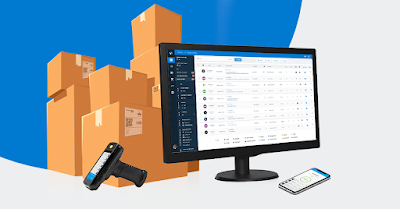What is Inventory Tracking and How Does It Work?
Inventories tracking refers to the process of a company regularly monitoring all of its inventory. Raw resources, unfinished commodities, and ready-to-sell things are the most popular definitions of inventory. You can see your exact inventory levels, the location of each item or SKU, updated delivery statuses, and other inventory-related data using inventory tracking. Every place of business that interacts with inventory has inventory tracking: manufacturing and production firms, warehouses, retail stores, and so on.
What exactly is being monitored?
In most cases, inventory tracking systems can keep track of the following data:
Stock levels have been updated.
This number indicates how much of each item you presently own. It's critical to maintain track of this information.
Stock Update
This number indicates how much of each item you presently own. It's critical to keep this information up to date so you know if you have enough stock for your company processes, whether they're manufacturing new things or completing client requests. Furthermore, your stock levels serve as a foundation for the other data that is kept track of.
Locations of Stock / Location of Inventory
In the best-case situation, your goods should not be kept in one place for an extended period of time. (If it does, it's either sluggish moving or dead stock.) After the merchandise arrives in your warehouse, it is processed and categorised, then stored, and finally retrieved and dispatched to the next stage of your supply chain.
Accuracy in Inventory
The ratio between the quantity of inventory that has been tracked and the quantity of goods that is physically present in your possession is a KPI (Key Performance Indicator). Both numbers should ideally match, but there may be variances due to factors such as theft, damage, miscalculations, and supplier shortages. The size of the differences will be revealed by inventory accuracy. Inventory accuracy, like stock levels, is critical to the seamless operation of your business processes.
Inventory Carrying Cost
The total amount of money spent on storing, holding, and owning your inventory is referred to as this. This includes your rent, labour, storage, and related expenditures, as well as security. Carrying costs can inform you how long your company can keep this product on hand before it starts to cost you money. Slow-moving inventory and dead stock are two major causes of high carrying costs, so you'll need to find a strategy to get rid of or sell the things if you want to save expenditures.
Because your stock isn't kept in a permanent area, it's critical to maintain track of its whereabouts so you know where to look if you need it.
Valuation of inventory
When a company produces its financial statements, this method is used to calculate the worth of unsold inventory. Inventory valuation assigns a monetary value to your unsold inventory, which must be recorded on your balance sheet. This will also assist you in calculating your inventory turnover.
Turnover of inventory
The rate at which your goods is sold is known as inventory turnover. Stronger sales are represented by a greater value, whereas poorer sales are represented by a lower value. Inventory turnover can provide insight into how well your firm is performing and whether you need to change your sales approach. Check out our no-cost service.
Download Inventory System Report / Excel Spreadsheet

 7:32 AM
7:32 AM

No comments
Post a Comment